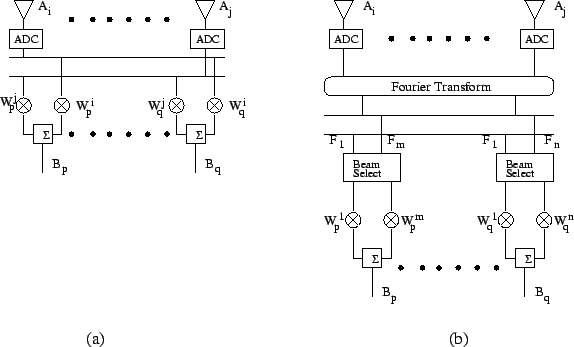 |
Digital Beam Forming (DBF) is a marriage between the antenna technology and digital technology. Workers in Sonar and Radar systems first developed the early ideas of digital beam forming. This coupled with the development of aperture synthesis techniques in radio astronomy lead to the development of the modern dipolar arrays.
An antenna can be considered to be a device that converts spatio temporal signals into strictly temporal signals, there by making them available to a wide variety of signal processing techniques. From a conceptual point of view, its sampled outputs represent all of the data arriving at the antenna aperture. No information is destroyed, at least not until the processing begins and any compromises that are made in the processing stages can be noted and estimates made of the divergence of the actual system from the ideal.
Digital beam forming is based on the conversion of the RF signal at each antenna elements into two streams of binary baseband signals representing cos and sin channels7.3. These two digital baseband signals can be used to recover both the amplitudes and phases of the signals received at each element of the array. The process of digital beamforming implies weighting by a complex weighting function and then adding together to form the desired output. The key to this technology is the accurate translation of the analog signal into the digital regime. Close matching of several receivers is not achieved in hardware, but rather by applying a calibration process. It is expected that more and more of receiver functions will be implemented using software. Eventually one would expect that the receiver would be built using software rather than hardware. We shall get back to this aspect later.
Figure 7.3 depicts a simple structure that can be used for beamforming. The process represented in Figure 7.3(a) is referred to as element-space beamfroming, where the data signals from the array elements are directly multiplied by a set of weights to form the desired beam. Rather than directly weighting the outputs from the array elements, they can be first processed by a multiple-beam beamformer to form a suite of orthogonal beams. The output of each beam can then be weighted and the result combined to produce a desired output. This process is often referred to as the beam-space beamforming (Fig. 7.3(b).
 |